Hwadamjae[Korea Quality] / 화담재[한국관광 품질인증]
6.4Km 2024-10-30
3 , Dalbithanok-gil, Gangjin-gun, Jeollanam-do
+82-10-9566-8890
Hwadamjae is a hanok pension located at the entrance of Dalbit Hanok Village in Gangjin, Jeollanam-do, that offers pet-friendly accommodations. There are four cozy rooms that can accommodate two to three people each. The Dalbit room, constructed with red clay, is heated using the gudeuljang system (underfloor heating). The Dalbit Maru room is also decorated with cypress, so even after a full night's sleep, you can still feel your head clear from the soothing scent of cypress. Across the yard are large and small jangdokdaes (traditional earthen jars) and an area where you can play traditional games.
Gangjin Moonlight Hanok Village (강진달빛한옥마을)
6.5Km 2024-04-04
2 Dalbithanok-gil, Seongjeon-myeon, Gangjin-gun, Jeonnam-do
This village with 29 hanok (traditional Korean house) is surrounded by Wolchulsan Mountain like a folding screen. About 10 of those unique houses offer a friendly hanok lodging experience for tourists by renting out one or two guestrooms. It is fun to see the yards of each house decorated differently from its front yard. The observatory at the village offers a panoramic view of towering Wolchulsan Mountain, expansive tea fields, rice paddies, and the cozy Gangjin Moonlight Hanok Village at a glance.
Worlindang (월인당)
6.8Km 2024-08-05
37-11 , Mojeong 1-gil, Yeongam-gun, Jeollanam-do
+82-61-471-7675, +82-10-6648-7916
Wolindang hanok stay in Mojeong Haengbok Village, Yeongam-gun, Jeollanam-do, is a year-round great spot for full moon watchers. Its traditional hanok features include red clay walls, daecheong (hall), ondol underfloor heating, and a numaru or upper floor - where visitors can take their tea. Outside is a fireplace for sweet potato baking or barbecues. Residents can enjoy a tea ceremony or sample natural dyeing or making red bean kalguksu (hand-cut noodle soup). The large grassy yard is decorated with interesting murals, and is often the site of outdoor ball games.
Yeongam Pottery Museum (영암도기박물관)
6.9Km 2025-01-09
5, Seohojeong-gil, Yeongam-gun, Jeollanam-do
+82-61-470-6851
Yeongam Pottery Museum is dedicated to promoting the history of pottery in Korea, starting from the oldest known pottery coming from Gurim Village. Visitors can learn about the history of this art form through exhibitions, educational programs, and hands-on experiences. Locally produced pottery is also available for sale. Nearby attractions include the Wangin Historic Site and Ha Jung-woong Museum of Art.
Wangbeot 165 (왕벚165)
8.9Km 2024-02-20
165 Wangin-ro, Seoho-myeon, Yeongam-gun, Jeollanam-do
Wangbeot 165 is a locally recommended Korean restaurant that excels in both taste and atmosphere. Its signature dish is dongchunghacho baeksuk (whole chicken soup with cordyceps), a hearty soup made with chicken, dongchunghacho (cordyceps), abalone, octopus, and various medicinal herbs, boiled to perfection. The ambiance of the hanok adds to the dining experience. Located near the site of the Historic Site of Wang In, where cherry blossoms bloom in spring, diners can enjoy their meal amidst the beauty of the blossoms.
Jangsupungdengi Village (장수풍뎅이마을)
11.5Km 2025-01-10
Banwol-ri, Yuchi-myeon, Jangheung-gun, Jeollanam-do
+82-10-3110-6145
Located in the far upstream of Jangheung Dam, Jangsupungdengi Village preserves the natural environment. The village has a shiitake mushroom center, eco experience center, and beetle farming field where children and teenage students may visit and learn about the nature and its eco system. The village is also open to the general public for quality time in nature.
Naju National Museum (국립나주박물관)
13.9Km 2022-02-04
747, Gobun-ro, Naju-si, Jeollanam-do
+82-61-330-7800
Naju National Museum displays artifacts found near the Yeongsangang River region and preserves artifacts excavated from throughout the Jeolla region.
While most national museums are found within the city, Naju National Museum is the first national museum to be located in a rural countryside. Its location provides a perfect relaxing atmosphere for visitors to take time and appreciate what the museum has to offer.
Although the museum may be isolated from urban cities, it uses modern technology to provide convenient museum experience. Naju National Museum is the first national museum to integrate NFC features within smart phones with the exhibition guide system for all exhibition halls. This integrated feature acts as a means to provide communication both ways, as visitors can receive information guides and upload them on social media via smart phones.
In addition to the collection of artifacts, the open-type storage rooms and the hands-on activities offered at the experience center provide opportunities to personally witness and experience the process of preservation and storage of cultural assets.
Military Headquarters of Jeolla-do Province, Gangjin (강진 전라병영성)
14.1Km 2020-05-19
175, Byeongyeongseong-ro, Gangjin-gun, Jeollanam-do
+82-61-430-3362
Jeolla Byeongyeongseong is a fortress located in Seongdong-ri, Byeongyeong-myeon, Gangjin-gun, Jeollanam-do. It played an important role as the main headquarter of the entire southwest region of the military in the Joseon era during the Japanese Invasion of Korea and Jeongyujaeran (the 2nd Japanese Invasion).
Built in 1414 during the time of King Taejong (17th year of his rule), the fortress spans over a 1,060m in length and has kept its original bottom base intact. Three Sugumun main gates, seven Ongseong, building sites, foundation stones, and 25 tombstones also remain. In addition, it is the best preserved fortress among the remaining fortresses in the Namhae area. Hamel, a Dutch sailor, drifted in the site from 1656 during the 7th year of King Hyojeong to 1663 during the 4th year of King Hyeonjeong in the Joseon dynasty and wrote a novel named ‘The Journal of Hendrick Hamel’ after visiting the area. His novel explained Korean policy, culture, and traditions of the time to the Western world.
Heukseoksan Recreational Forest (흑석산 자연휴양림)
14.7Km 2021-01-08
306, Sangol-gil, Haenam-gun, Jeollanam-do
+82-61-535-4812
Located at the base of Heukseoksan Mountain, Heukseoksan Recreational Forest is a recommended vacation spot with forest and valleys as well as beautiful azaleas on display during the azalea festival held every May. There are also nice lakes near the valley. In addition, visitors can enjoy general mountain cottages with special red-clay room, water playground, animal barracks and more.
Muan Hoesan White Lotus Pond (무안회산백련지)
15.9Km 2021-02-17
333, Baengnyeon-ro, Muan-gun, Jeollanam-do
+82-61-283-1325
Muan Hoesan White Lotus Pond is the largest habitat of white lotus in Asia, covering an area of approximately 330,000 square meters in Bogyong-ri, Muan-gun in Jeollanam-do. This pond was originally a reservoir made during the Japanese colonial period for irrigation, but was abandoned with the development of the Yeongsangang River system. The reservoir was recreated and expanded into today's lotus habitat thanks to the effort of Jeong Su-dong, who planted twelve lotus roots along the shoreline and took care of them dearly after dreaming of twelve white cranes landing upon the reservoir. The white lotus flowers in this pond blossom and fall from July until September. A lotus festival is held in August, when the flowers are at their peak.
![Hwadamjae[Korea Quality] / 화담재[한국관광 품질인증]](http://tong.visitkorea.or.kr/cms/resource/79/2803479_image2_1.jpg)
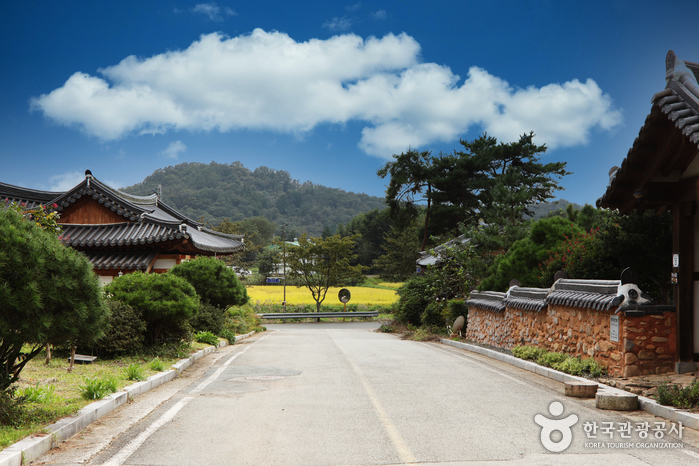
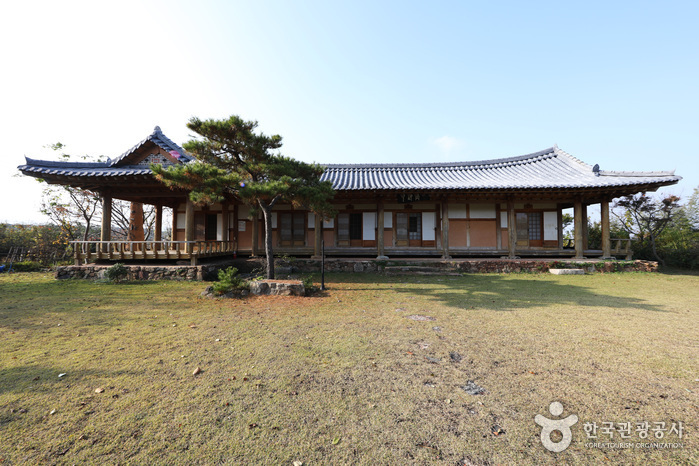
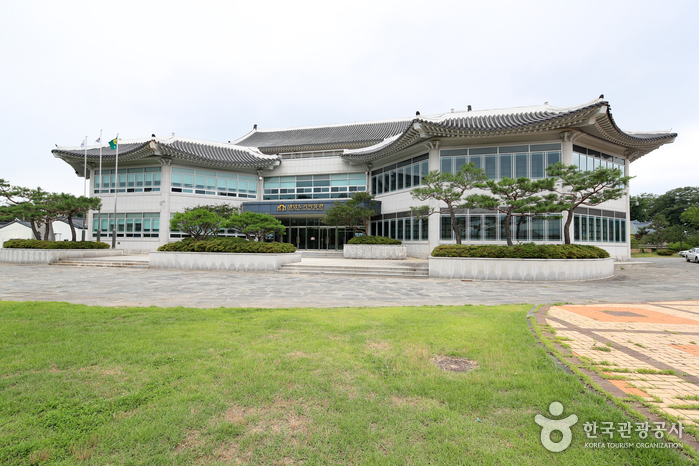
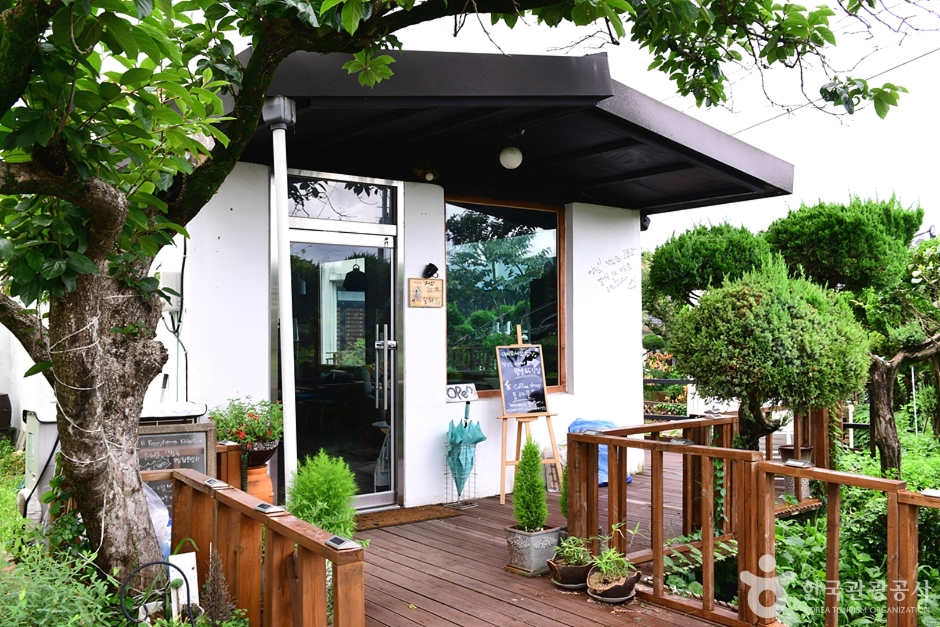

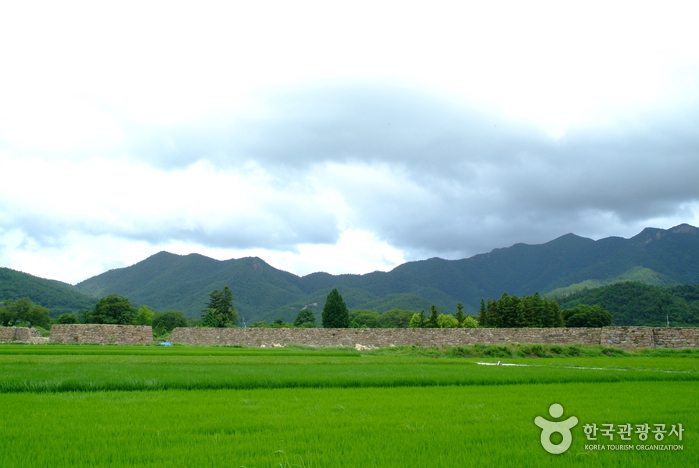
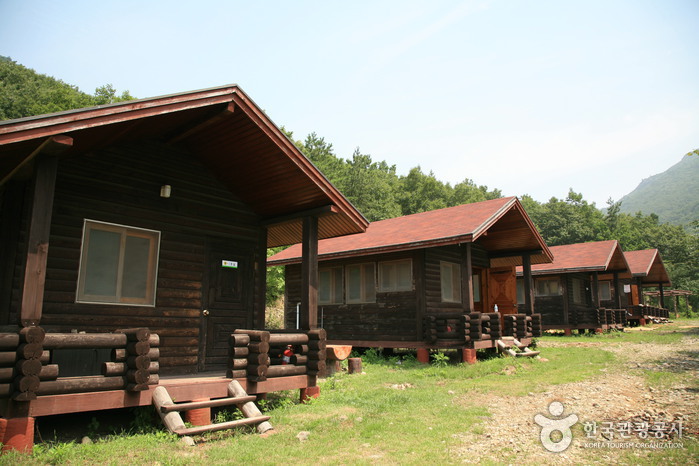
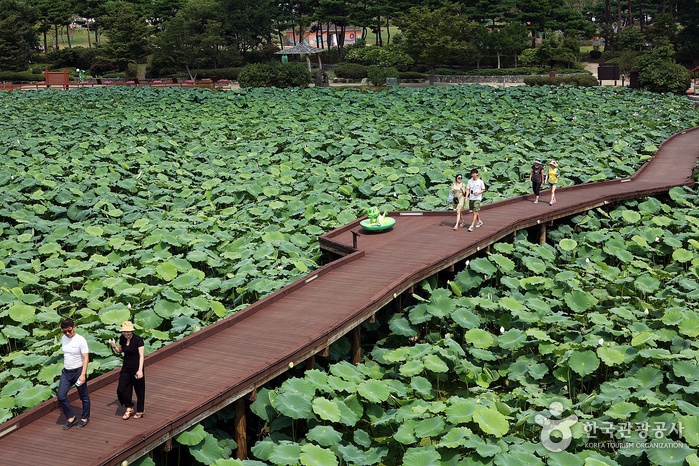
 English
English
 한국어
한국어 日本語
日本語 中文(简体)
中文(简体) Deutsch
Deutsch Français
Français Español
Español Русский
Русский